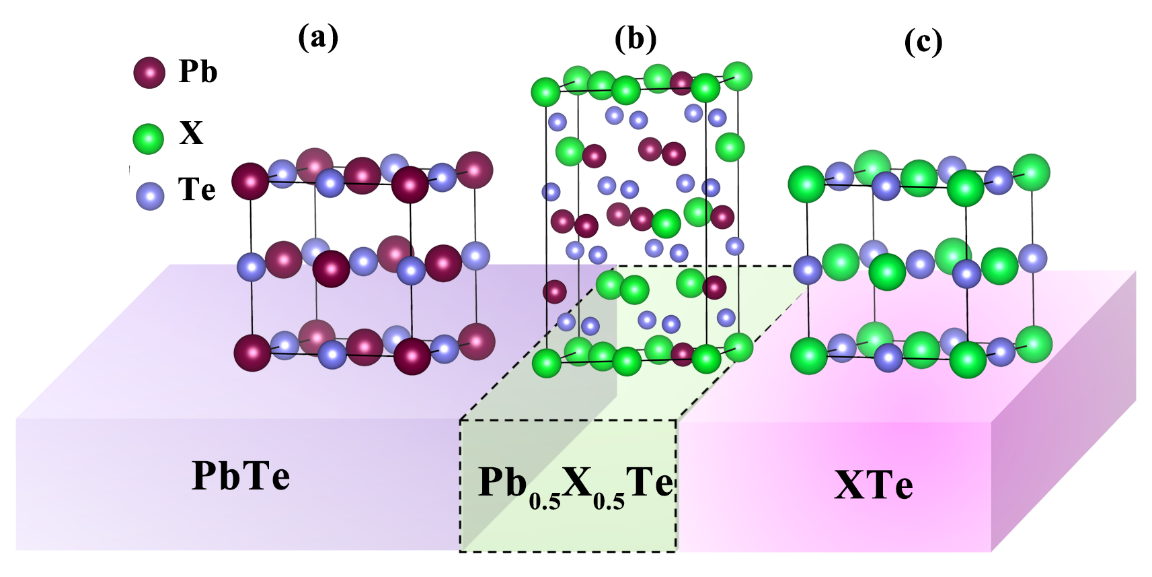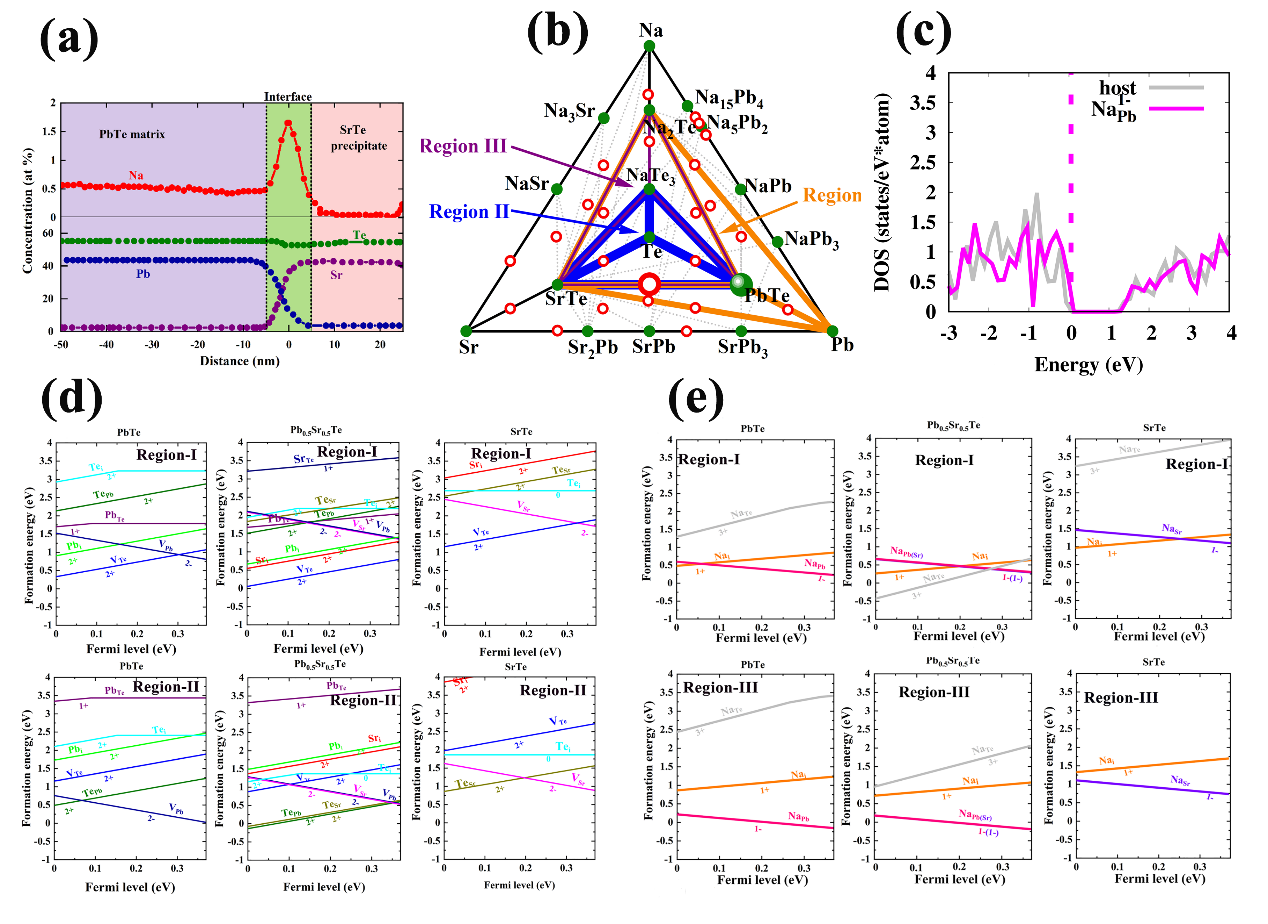
Recently, professor ZHANG Yongsheng, from the Department of Computational Physics and Quantum Materials, Institute of Solid State Physics, Hefei Institutes of Physical Science, made important progress in the research of defect behaviors at the interface of XTe (X=Ca, Sr, Ba) nanostructured PbTe.
"Our work not only elucidates the lowest energy defects in Lead telluride (PbTe)-based materials, but also paves the way to understanding and designing promising thermoelectrics with interface phases.” Said ZHANG Yongsheng, a scientist of physics.
According to him, the solid solution PbTe/SrTe interface environment could further decrease the formation energies of the low-energy defect (Na1-Pb/Sr), which played an important role in increasing the Na concentration in the Lead telluride (PbTe) based thermoelectric compounds.
PbTe is a traditional thermoelectric material with high performance in the mid temperature range (500–800 K). In recent years, researchers have been working to further optimize its thermoelectric properties by band and defect engineering. However, the physical mechanism of defects in the precipitated phase interface is still unclear, which hinders the realization of further regulating thermoelectric properties of PbTe based compounds by precipitating and doping.
To solve the problems, this team scrutinized the experimental observations of SrTe precipitated in PbTe with Na doping and discovered that the PbTe/SrTe interface was a wide PbSrTe solid solution region rather than a clear coherent/semicoherent interface. Correspondingly, they designed a PbTe/PbXTe/XTe pseudo-interface model and systematically investigated the intrinsic and extrinsic (Na) defect behaviors in the three parts included at different chemical potential environments. To understand the defect stability, they also aligned the Fermi levels of the three parts, and obtained the comparable defect formation energies in this system.
Few highlights of the study are:
The research was supported by the financial support from the National Natural Science Foundation of China, NSF DMREF and United States Department of Energy through the Computational Science Graduate Fellowship (DOE CSGF). The calculations were performed in the Computational Science of HFIPS, the ScGrid of Supercomputing Center, Computer Network Information Center of Chinese Academy of Science.

Fig. 1 Schematic of the concentration distribution of Na doping in PbTe-XTe, and its effect on thermoelectric properties (Seebeck coefficient, conductivity, thermal conductivity). (Image by ZHANG Xuemei)

Fig. 2 Schematic of the PbTe/PbXTe/XTe pseudo-interface, including three parts: (a) The bulk PbTe, (b) the solid solution of Pb0.5X0.5Te (X= Ca, Sr, Ba), and (c) XTe. (Image by ZHANG Xuemei)

Fig. 3 (a) Experimentally measured concentrations of Pb, Te, Sr and Na across the PbTe/SrTe interface of the SrTe precipitated in PbTe. The data is taken from Nature, 489, 11439, (2012); (b) Na-Pb-Sr-Te quaternary phase diagram; (c) Total electronic DOS of Na1-Pb defect in the PbSrTe solid solution; Calculated formation energies of intrinsic defects (d) and (e) Na extrinsic defect as a function of the Fermi level in the three parts of the PbTe/SQS/SrTe pseudo-interface: PbTe, SQS (Pb0.5Sr0.5Te) and SrTe. (Image by ZHANG Xuemei)
Link to the paper: First principles investigation of intrinsic and Na defects in XTe (X=Ca, Sr, Ba) nanostructured PbTe
Contact:
ZHAO Weiwei
Hefei Institutes of Physical Science (http://english.hf.cas.cn/)
Email: annyzhao@ipp.ac.cn
First principles investigation of intrinsic and Na defects in XTe (X=Ca, Sr, Ba) nanostructured PbTe